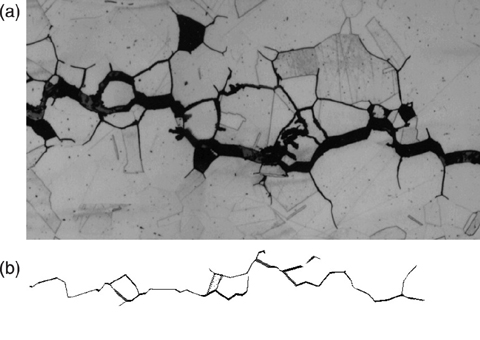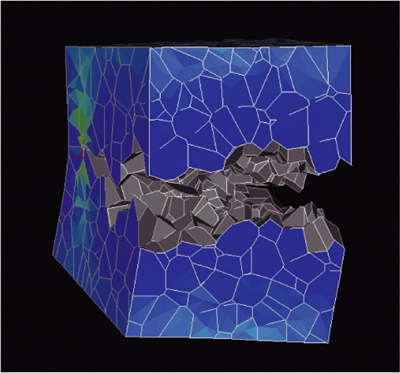
Fig.10-2 Intricate crack shape typical of stress corrosion cracking

Fig.10-3 A three-dimensional model reproducing crack shapes
Inside a nuclear reactor, metal components are subjected to neutron irradiation and high-temperature coolant water, and after several decades of operation, cracks can appear in components which are otherwise resistant to cracks and corrosion. This kind of phenomena is called "Stress Corrosion Cracking" (SCC), because it occurs only when the material is subjected to both tensile stress and a corrosive environment. However, the exact mechanism of interaction between stress and corrosive environment remains unclear. Since prediction of SCC progression is crucial for safety assessment of nuclear reactors, intensive experimental studies have been carried out to measure SCC progress speed in operational environments, and SCC progression in a real reactor over several decades into the future is estimated. If the exact mechanism of SCC is identified, we can provide a theoretical foundation for these estimations. Therefore this topic has been intensively studied.
One of the typical features of SCC is an intricate crack shape as shown in Fig.10-2. Metal material is usually composed of many crystal grains whose size is about 0.05 mm, and cracks follow the interface between these grains in SCC in a zigzag shape. Many branches of cracks are also a typical feature of SCC. In experiments, one can only observe a two-dimensional intersection of cracks, so the actual three-dimensional shape is not known, making it difficult to estimate the exact tensile stress acting at the crack tip which drives the SCC progression. If this intricate crack shape could be reproduced by a computer simulation, one could identify the mechanism which generates the intricate shape, and also see the three-dimensional shape of the cracks, which might be a clue to identify the mechanism of SCC.
In this study, a metal material composed of ten thousand grains is modeled and crack propagation in it is simulated by a large-scale computation of tensile stress distribution (Fig.10-3). In the simulation, a very simplified model is used: the crack proceeds at the interface of grains which is under the strongest tensile stress. In spite of the simplicity of the model, the resultant crack shape reproduces the essential features of experimentally observed crack shape very well, especially the frequent branching of the cracks. Since this branching behavior is difficult to explain by an intuitive model of stress distribution, it has been attributed to corrosion. The present simulation takes the heretofore unseen three-dimensional crack shape into account and reproduces the intricate crack propagation behavior in all directions, which results in the intricate crack shape including the branches. This simulation shows the potential of computer simulation to reproduce intricate three-dimensional shapes, which is difficult to reproduce by intuitive reasoning.
<Previous: 10 Computational Science and E-Systems Research | Next: 10-2 >